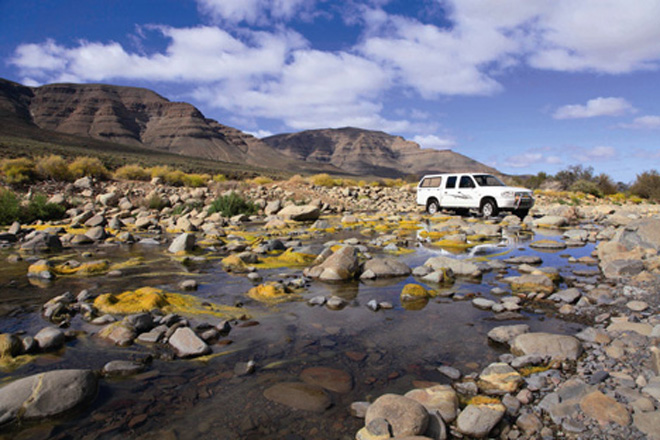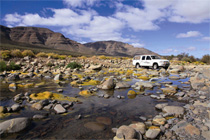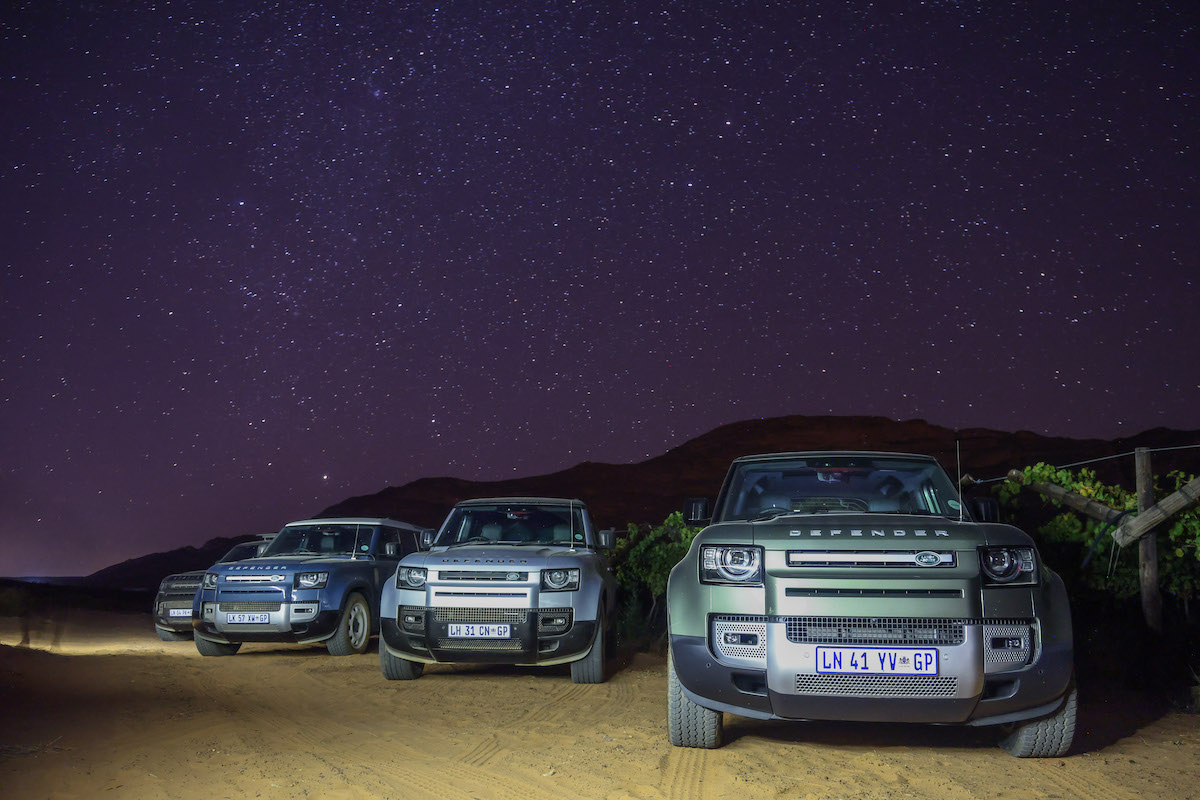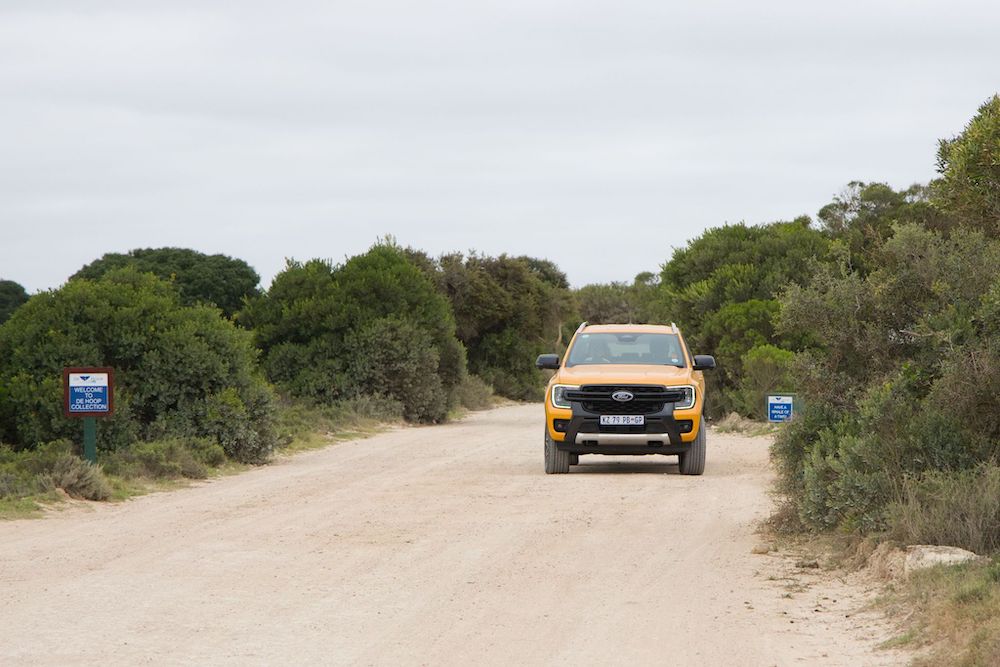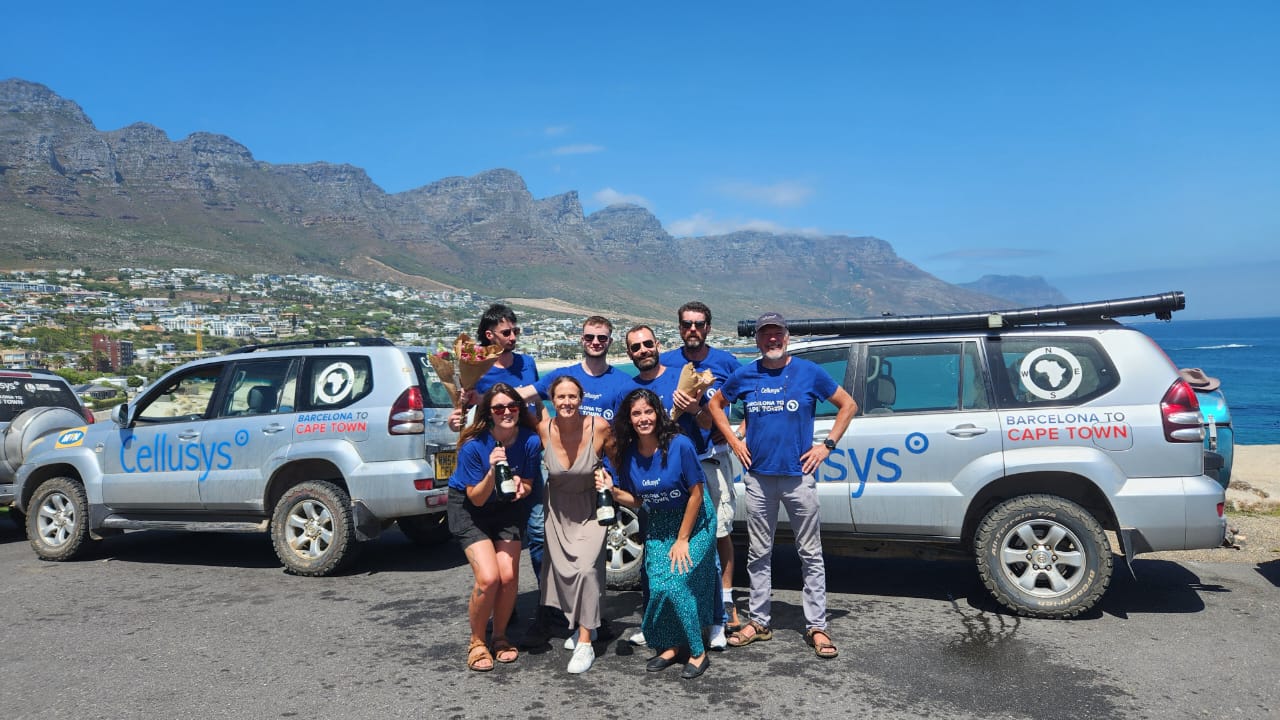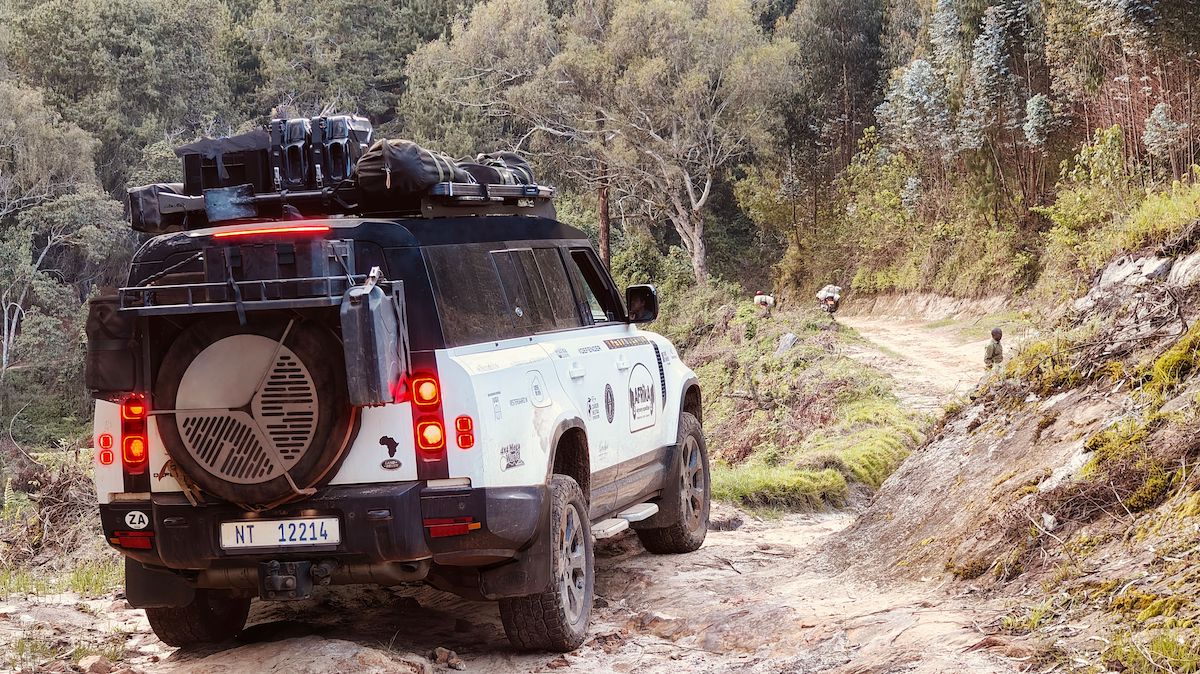Text and photographs: Steve Moseley
As soon as we’d taken delivery of our brand new Howling Moon Safari Dome tent we tossed around a few destinations where we could go and try it out. We wanted a place to go “bush”, where we could get back to basics and catch up on some R and R surrounded by lots of P and Q. The Tankwa National Park seemed a good place to satisfy our needs and, after booking four nights at a couple of the bush camp sites, we were ready to go.
On the eve of our departure we came across a reader’s letter in the October issue of Leisure Wheels, written by a poor chap who had six punctures while driving in the Tankwa Karoo. Not having a puncture repair kit in our Mazda B 2500D we almost hit a panic, but a mad dash to the farmers’ co-op in our home town of Loxton produced the required item. With it and a hand pump tucked safely behind the seat we were back on track.
As we approached Gannaga Pass, which winds down the Roggeveld mountains south of the small hamlet of Middelpos, grey clouds hung over the rim of the escarpment announcing that winter was still packing down like the Springbok forwards, and shoving spring into the north. We rapidly dropped altitude along the narrow and bumpy road before levelling out on plains across which the Tankwa Karoo stretches.
At the new park headquarters we announced our arrival, picked up a map and bird list, and headed to the nearby Langkloof campsite, situated in amongst the folds of the sculpted mountains. Our new Safari Dome went up without a hitch, and with 3 x 3 metres of floor space, and plenty of headroom, it was palatial compared to our old 3-man tent. As darkness descended, the light of the campfire dancing amongst the branches of our sheltering thorn tree, the R and R began.
Since the park’s proclamation in 1986 it has expanded from 26 000 hectares to 130 000 hectares, with plans to incorporate more land in the future. It protects a portion of the succulent Karoo biome, designated a Biodiversity Hotspot by Conservation International. Its landscapes vary from the towering mountains in the north to gravel plains and isolated hills in the south and west, and there’s not only plant-life to marvel at, but an unexpected variety of mammals and 170 bird species as well.
The next morning, after a couple of mugs of moerkoffie prepared in a blackened billycan on the fire, we broke camp to the bark of baboons resonating through the kloof. As we left the embrace of the mountains it was obvious spring had counter-shoved during the night, and the plains shimmered in a haze reminiscent of that above a Grand Prix starting grid waiting for the green light. It’s out here you get the feel of what the Tankwa Karoo is all about – space. In fact, if you have a phobia of far-reaching empty expanses, or of being alone, the Tankwa Karoo would frighten the khaki off your safari shirt.
Heading south we passed the junction with the P2252, a minor gravel road leading out of the park towards the Ou Berg Pass, which rises towards Sutherland further east. To the south of this the imposing flat-topped mountain of Katjiesberg rose above the plains. A little further on we turned off towards Oudebaaskraal dam and arrived on its banks in time to break out the bread rolls and leftover wors for lunch. The dam is an unexpectedly vast stretch of water on the Tankwa River, and after good winter rains the abundance was lapping at the edges of the spillway. We’d been told to keep a look out for the endemic, but rarely seen, Burchell’s courser in the arid surrounds of the dam, but it remained unticked on our “to see” list.
Passing the fort-like Tanqua Guesthouse we wondered about an old steam-driven piece of machinery, and a couple of ox-wagons facing in the direction of the old Cape Colony from where they had surely come. A little further on the road dipped through a thickly-treed riverbed where, before the land became part of the park, large-scale cultivation must have taken place.
Every once in a while I’d check the Dunlop Track Grips for slow punctures, but they remained pleasingly stout and healthy looking. I also looked carefully at the gravel to see if I could come up with a feasible reason why it should be so hard on tyres. The only thing that looked obvious was that the gravel tended to be a chunky triangular shape with a nasty habit of resting on its base with its point facing skyward.
Out on the plains we stopped regularly to wander on foot in the vastness, looking for the smaller things the desert landscape has to offer. One thing the area is renowned for is its succulent plants and we searched for the small “stone plants” that grow amongst the gravel, but disappointingly we came up empty-handed. Here and there springs produced a meagre supply of water that to us didn’t look very thirst quenching but, from the procession of creatures drawn to the salt-rimmed edges, it was obvious the liquid was greatly appreciated. The stones and rocks of the region, referred to fondly by my wife as “klippies”, became an unexpected subject of fascination for us. In many cases their burnished, shiny bronze surfaces were irresistible to feel and caress. After a while I became a bit worried as the only “klippies” I’m normally attracted to is with Coke and enjoyed around a braai. In one particular place the gravel resembled chocolate buttons and we wondered whether Fred Flintstone and his family might have dropped an extra large box of Smarties here.
We reached our campsite at Volmoesfontein, below the pinnacle of Pramberg, and pitched our tent a short distance from the adobe house. In the past some hardy souls used to call this dwelling home while trying to eke out a living on the surrounding plains. Many of the buildings in this arid area are built using this method of raw mud and chaff, reminding us of the homes along the wadis in northern Sudan.
For the next three nights we’d have great views to the west, east, and south and we didn’t see another living soul the entire time. In the mornings, the dominant sound was the kelkiewyn call of the Namaqua sandgrouse as they came in flocks to drink at the small pool of water oozing from the earth.
While enjoying the R and R in our reclining camp chairs we panned the bino’s across the flats and hillsides for wildlife and picked up bat-eared fox, springbok, and Ludwig’s bustard. The Cape mountain zebra were happy to get closer to us, and three adults and a foal kicked up clouds of dust as they horsed around on the slopes of Pramberg, all the time within sight of the life-giving spring.
In the dry gullies the hoof-print shaped burrows of the buckspoor spider were easily seen in the soft sand, and lizards darted from the shade of one bush to another. Nights were punctuated by a deep, unpolluted darkness sprinkled with stars whose brightness gave our halogen headlamps a run for their money. Occasionally the heavens were underlined with the effervescent streaks of shooting stars. Above the soft snap and pop of the fire, Black-backed jackal and Spotted eagle owl serenaded the night.
On our second morning we set off on a slow exploratory drive up towards Varschfontein. As we neared the area we spotted a pan shimmering with a liquid hue in the distance. There must be good birding there, we concluded, but the closer we got the further the water receded until we were parked on the edge of a dry cracked surface that stretched into the haze – stumped by a mirage, the trick of the desert.
For a bit of variation we took the nearby 4×4 trail through the hills from Varschfontein to Blink Vley Vlakte. It started easily on the flat before climbing steadily through a section of Kalahari-coloured sand and dolerite boulders. Then came a series of very steep inclines and declines as the track roller-coastered through the koppies. Here the correct gear selection was important, as a hurried change halfway up or down could produce one of those spinning/sliding/stalling moments. The views from the high points were spectacular, and then the trail dipped behind Leeuberg and meandered back onto the level.
In the soft light of late afternoon a colony of Brandt’s whistling rats provided sundowner entertainment with a difference. With our chairs carefully positioned behind some scrub, and a cool glass in hand, we sat motionless while the extended families fed peacefully, totally ignoring us.
As we headed for home the bigger wildlife really came to the fore. Besides the jackal that stared us down from just metres away, we spotted four pairs of bat-eared foxes within a short distance, and around a bend a 48-strong herd of Gemsbok loped away across the veld. We then idled back up Gannaga Pass, enjoying the stupendous views below the clear blue sky of spring.
Back home I carefully inspected the tyres one last time. The pressures were all correct and, with no detectable hissing, I counted myself lucky. If I may offer an opinion, I don’t think it’s so much the state of the road or type of gravel, but more the type of tyre. Having lived in the Karoo for ten years I swear by the Dunlop Track Grip with their chunky treads. Tyre pressure is also important and we always reduce ours to 1,8 bar for gravel road driving. However, I digress.
The Tankwa National Park is not going to be everybody’s cup of tea, especially those dyed in the Woolworths food hall types, or those who feel anxious as soon as the cell phone signal sinks below one bar. However, for those who like to search within themselves taking time here will stir something deep down inside that may well have you coming back for more.
Travel Planner
How to get there
From Cape Town take the N1 north and then the R43 to Ceres. Leave Ceres on the R46, which eventually becomes the gravel R355. The park is signposted from this road. From the north take the N12 through Kimberley and Britstown to Victoria West. Then take the R63 to Loxton and from here the gravel R356 through Fraserburg to Sutherland. You can then either take the R354 to Middelpos and drop down the Gannaga Pass, or take the scenic Ou Berg Pass from Sutherland and then the minor P2252. Alternatively take the N14 through Upington to Keimoes and then the R27 to Calvinia. Then take the R355 south towards Ceres and turn left at the parks signboard.
Signage in the park is a little sketchy in places so it’s best to check out the map on the website before leaving. A hard copy of this will be supplied once you check in at the park’s headquarters.
When to go
The most popular months for visitors are July, August and September when the winter rains bring out the flowers. Bird watching is at its best between August and October. Summer temperatures can peak at around 40 degrees Celsius.
Accommodation
Most accommodation is in restored farmhouses and cottages scattered throughout the park, which have been comfortably furnished and all have a fireplace, hearth, or wood-fired stove for winter warmth. There’s no electricity so candles and paraffin lanterns are the only source of light, and warm water is from a wood-fired donkey boiler or gas geyser. There are also five purpose-built cottages at Elandsberg with views towards the Roggeveld escarpment. They sleep four or six, are nicely equipped and have a plunge pool and covered braai area.
There are six bush campsites in the park but no facilities so you must be totally self-sufficient and what you take in must come out.
What not to forget
Puncture kit, pump, binoculars, bird, plant and animal guides, sun hat, sun-screen in summer, and warm clothing in winter. If you’re camping don’t forget water, spade, wood, and everything else you need to self-sufficient.
Fuel
If you enjoy getting out there to see what you can see you can run up quite a mileage so keep an eye on the fuel gauge. Park headquarters sells diesel otherwise the closest refuelling towns are Middelpos, Ceres, Calvinia, and Sutherland, none of which are in reach once the reserve light comes on.
Contact
For further information and to book accommodation you can contact the park direct on 027 341-1927 or email [email protected]. Or call central reservations in Cape Town on 021 552-0008 or Pretoria 012 428-9111; email [email protected], or log on to www.sanparks.org.
